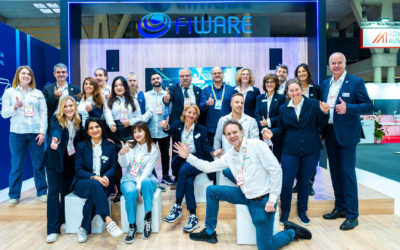As the digital revolution paves the way for future living, robots step in as helping hands in day-to-day life. Their collaboration with humans is already a thing of the present across many industry domains. Fans of the Star Wars franchise know too well that the much-loved robots – or may I say droids – commonly featured in George Lucas’ saga were way more than simply loyal sidekicks. Just like in real life, for some time now robots have been assisting humans in their processes, and the technology behind them has also evolved.
Today, robots are networks of microcontroller-based sensors and actuators, connected to larger computing devices. On that front, ROS (Robot Operating System) has become the de-facto standard framework for the development of robotics software and plays a key role in the rapid evolution of robotic applications. ROS does not encompass the microcontroller level, forcing developers to adopt custom solutions. Rather, it allows flexibility, ensuring that robots are becoming less expensive to deploy and operate.
Early Days
There is still a long way to go. Cost savings, development efficiency, and lower barriers to entry are still needed. There is yet a major technological difference between the established robotic software platform for high-performance computational devices and the low-level libraries for microcontrollers. Here enters micro-ROS, the platform for seamless integration of resource-constrained devices in the ROS ecosystem. With the help of a common platform at the microcontroller level – by extending the well-established high-level ROS framework towards microcontrollers - these issues can be addressed.
To learn more about the use of ROS on microcontrollers – did you know microcontroller usage ranges from microwave ovens, TV-sets, Lego NXT, talking dolls to vehicles (cars, hoists), to mention but a few? – and its many benefits (interoperability, communication protocols…) we caught up with Ralph Lange, Project Manager, Robotics Systems & Software Engineering, Bosch Corporate Research, one of the parties leading the micro-ROS project.
Watch the video and get to know, among other things, how they are planning to apply micro-ROS to product development and how this process can benefit from all the tools and software components that have so far been developed around ROS. Want to know more about this project, its architecture, upcoming activities, and how you can be a partner? Visit the micro-ROS website.



